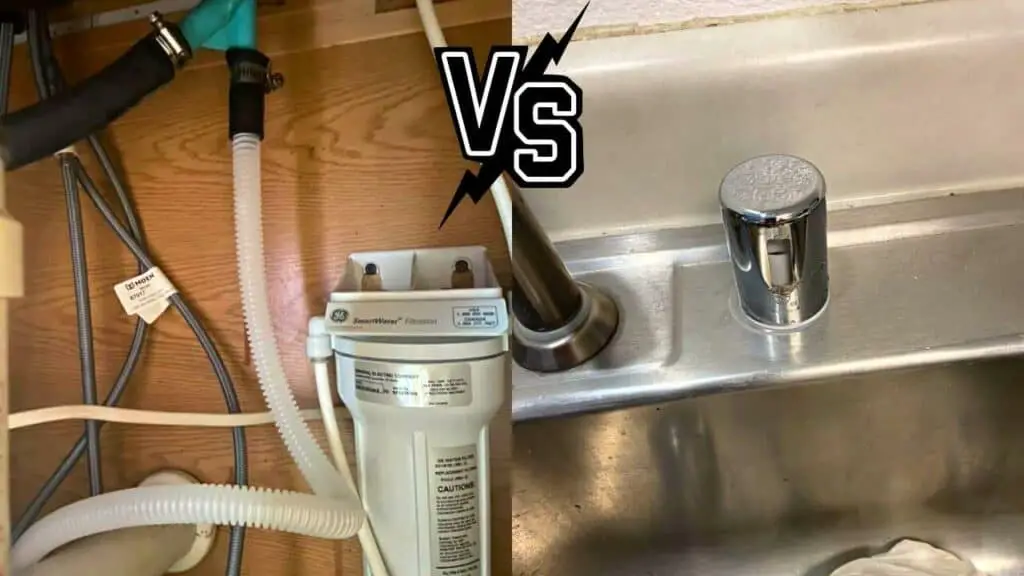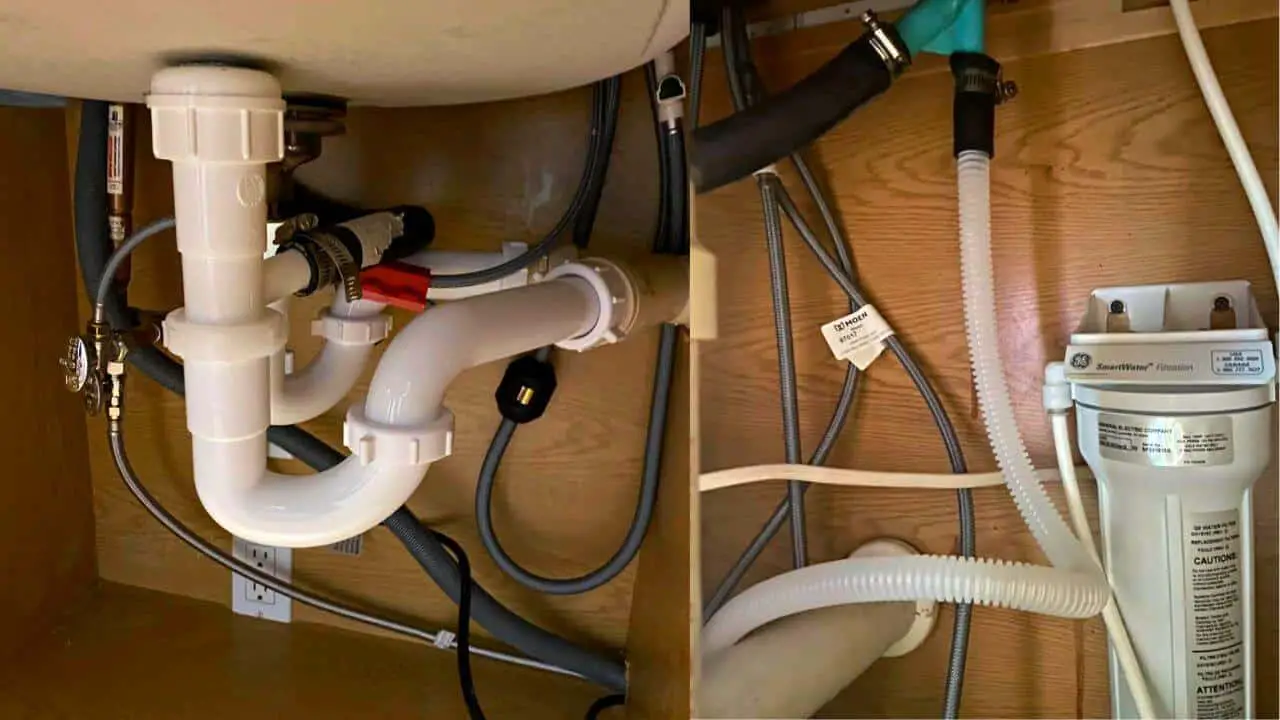Last Updated on August 15, 2023 by River Tree Farms
If you have been using a dishwasher for a long time, you may have, at some point, experienced a wastewater backup. While this is the worst that can happen, even a mere smell of sewage in your dishwasher won’t be a pleasant thing to experience.
The good news is that you can prevent such from happening, and that’s where a dishwasher air gap comes in handy. This small device protects your dishwasher from any wastewater that may back up just in case the kitchen sink drain or garbage disposal clogs.
This article outlines the step-by-step process of how to install a dishwasher air gap under the countertop. Stay tuned.
What Happens If Your Dishwasher Doesn’t Have an Air Gap?
As mentioned above, the air gap prevents contaminated water from flowing back into your dishwasher in case of a clog. Although not everyone embraces it, this device remains a crucial installation in your plumbing system, and that’s why some state plumbing codes mandate it.
Without an air gap, you have a high chance of waking up to a sewage-filled dishwasher, such a disgusting sight to behold. Please note that the air gap will not prevent wastewater from backing up, but if it does, your kitchen sink will be the victim here, not your dishwasher.
How to Install a Dishwasher Air Gap Under the Countertop?
Dishwasher air gap installation is a straightforward process that requires little expertise. Here is an essential guide on installing a dishwasher air gap under the countertop: –
1. Identify the air gap hole on your countertop. If you move to a new house, you should be able to spot a hole on your countertop near the faucet.
Sometimes, you may notice a small disc-shaped object instead. This disc could be covering the hole, so you will have to remove it to access the hole. If the hole is absent, you must drill one yourself.
2. Connect the air gap’s small leg to the dishwasher drain hose. Ensure that the drain hose is compatible with this air gap leg and fasten them tightly using a hose clamp.
3. Connect the other air gap leg to the garbage disposal. The garbage disposal has a protruding inlet that traps debris from the dishwasher and the sink.
Ensure that the hose you use is compatible with the air gap leg and the garbage disposal inlet. Tighten the junctions using hose clamps to prevent any possible leakages.
Remember, you can also link your air gap directly to the drain by connecting the hose to the Y-piece found on the sink drain.
4. Confirm that hose clamps are tightly holding hoses together.
5. Take off the silverish part, the vanity, from the end of the air gap and push this end from underneath to the countertop through the hole you located earlier. Fasten it in place using a nut to ensure it doesn’t fall back. Put the vanity back on to cover the visible part of the air gap.
6. Run your dishwasher to identify any possible leaks.
Do Dishwasher Drains Require an Air Gap?
Absolutely. If you have a dishwasher, you should consider installing an air gap. The installation process may sound like extra and unnecessary work, but it will save you big time.
Enjoying a clean kitchen, a fresh-smelling dishwasher, and good health is a small price. Even if your local plumbing codes don’t require you to have an air gap on your dishwasher drain, you should install it anyway.
Alternatively, you can install a high loop on your dishwasher drain. In fact, some plumbers will recommend high loops over air gaps based on their experiences with each device.
Even so, they both serve the same purpose of protecting your dishwasher from wastewater backup.
Which is Better: A High Loop or Air Gap for a Dishwasher?

According to experts, an air gap is a better option to protect your dishwasher from the backflow of dirty water. While the high loop can also serve the same purpose, it does not guarantee total protection.
As the name implies, a high loop is a drain hose curved in a semi-circle and elevated above the dishwasher drain and the garbage disposal. The elevated loop lies right below the kitchen sink, and this is to ensure that water from the sink drain does not flow back into the dishwasher drain, even if there is a clog.
On the other hand, an air gap is a device that ensures that drain water from the dishwasher does not, at all costs, mix with backup water from the garbage disposal. It is typically a barrier between the two devices, which guarantees the dishwasher’s safety. Although the air gap is beneath the countertop, its tip lies on top of the counter.
Besides preventing the backflow of dirty water, it also maintains adequate ventilation in the plumbing system. In case of a clog in the garbage disposal, water will start leaking through the tiny holes in the air gap into the sink. This will prompt you to clean the drain and prevent any possible damage.
From this brief high loop vs. air gap comparison, there’s no doubt the air gap wins. This device is among the best plumbing inventions ever. Even so, the high loop will still solve your dirty-water-back-up problem, only that it may not be entirely reliable. Your plumber will advise on the option you should choose depending on your location and water backup risk.
Frequently Asked Questions
What else can I use instead of an air gap?
A high loop or a dishwasher standpipe are great alternatives to an air gap.
Is it possible to install an air gap under the counter?
Yes. However, the air gap must be way above the dishwasher drain, preferably above the countertop, for maximum safety.
How often should I clean my air gap?
Once every month is okay. You can also clean it whenever it clogs.
Final Words
Small as it is, the air gap is an excellent addition to your plumbing system, so you should consider having it. It ensures that no greasy and contaminated water will flow back into your dishwasher once you complete your cleaning cycle.
Knowing how to install a dishwasher air gap under the countertop is the first step toward keeping your dishwasher clean. Remember, a clean dishwasher can help a great deal in maintaining a clean and conducive environment in your kitchen.
If you need help with dishwasher air gap installation or any other plumbing problem, don’t hesitate to call a professional plumber.

